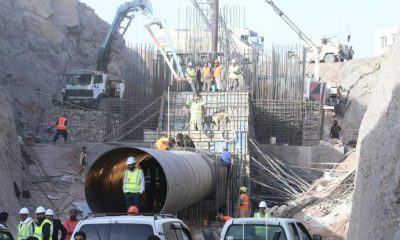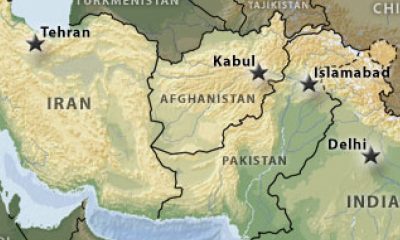Afghan Taliban and the Pakistan rulers are teetering on the brink of a major crisis as trust-deficit between the two complicated neighbors has been sweltering. Since coming into power in August 2021, the Taliban has defied Pakistan as one of its main state benefactor during the fight against the US military, but apparently it’s done so by challenging status of the Afghan-Pakistan border, and providing hideouts to the Tehreek-e-Taliban Pakistan (TTP).
Faced with rising violence, Pakistan has now pushed and pursued a tougher line to pressure Afghanistan’s Taliban rulers to crackdown on TTP, but the Taliban is not interested in doing so. Pakistan continues to call on Afghanistan’s Taliban to prevent terrorist attacks coming from their soil. Pakistan’s Interior Minister, Rana Sanaulllah said that the increase in terror activities by TTP should be a concern for Afghan Taliban as well as it is a threat to regional peace.
He stated that terrorism activities by TTP were on the rise in Balochistan and Khyber-Pakhtunkhwa, referring to a recent suicide attack in Quetta that killed four people, including one police officer and wounded 30, mostly policemen. TTP immediately claimed responsibility for the attack just one day after the group called off a shaky ceasefire agreed with the Pakistani government in June. TTP said it launched the attack to avenge the killing of their former spokesperson, Abdul Wali, aka Omar Khalid Khurasani. He was killed in a roadside bombing in Afghanistan’s Paktika province in August.
In first nine months of this year, at least 450 people, mostly security forces were killed across Pakistan, and the officials dismiss the violence as “isolated incidents of terrorism.” Islamabad linked the spike in insurgency to the Taliban takeover of Afghanistan, where TTP have taken refuge and continue to direct cross-border attacks from there.
At the same time, the Afghani Taliban are also scrambling to restore peace in Afghanistan after several deadly attacks ripped through several provinces including Kabul, the capital city, killing and wounding hundreds of people. The recent terrorist attack inside a religious school killed at least 19 students in the province of Samangan, and nearly 30 others remain injured. The casualties could be much higher.
Pakistan, Afghan Taliban and TTP’s relations
Relations between the Afghani and Pakistani Taliban are seemingly indestructible. The TTP had once announced that the group has fought foreign forces along with the Afghan Taliban and stated that many suicide attackers of the group had been killed in the war in Afghanistan to prove the group’s loyalty to the Taliban. On August 15 2022, TTP also congratulated the Taliban on the first anniversary of the withdrawal of international forces from Afghanistan. This was not the stop point as the group has emphasized that it will prove its loyalty to the Afghan Taliban in the future too.
Reportedly, Afghan Taliban since taking power has adopted four questionable steps in support of the TTP that are conspicuously against Pakistan’s security.
1 – The important step was providing TTP a free field in Afghanistan as the Taliban freed over two-thousand TTP members incarcerated in Afghan jails by the previous Afghan government. This could be the likely reason that after six years of relative stability in Pakistan, attacks claimed by TTP resumed and increased in 2021 by 56 percent.
2 – The Afghani Taliban had openly opposed fighting the TTP and instead offered peace negotiations between the group and Islamabad. Under Afghan Taliban mediation, the TTP commanders held several rounds of peace talks with Pakistani officials in Kabul and Taliban encouraged both sides to reach a ceasefire. In May, a ceasefire reached and within the time, both sides blamed each other for violating the terms, until the TTP unilaterally ended the truce on Wednesday.
3 – The most important point of contention and a big matter of concern for Pakistanis is the ongoing refusal to recognize the Durand Line. The Taliban since their first governing in 1966 till today did not recognize as settled the 2,640 kilometer border between the two countries known as the Durand Line.
Taliban top official, Zabihullah Mujahid had once said that the issue of the Durand Line is still an unresolved one, while the construction of fencing itself creates rifts within a nation spread across both sides of the border.
4 – Another significant concern for Pakistan is the openness of Taliban engagement to India, the arch-enemy of Pakistan in the region. Taliban Defense Minister, Mullah Yaqoob had once shown willingness if New Delhi provided military training for the Afghan troops. India, which has suspended its diplomatic mission in Kabul after the Taliban came to power, had just said it wants to complete unfinished development projects in Afghanistan.
Yaqoob is not an ordinary Taliban member, beside the defense minister, he is the eldest son of Taliban founder and supreme leader Mullah Omar. Yaqboo’s call for support from India came as a major blow to Pakistan’s decades-long policy in Afghanistan to have a dependent regime next door. This also doesn’t suit Islamabad’s long-term goal of using Afghanistan for its regional, and particularly its anti-India agenda.
High-level Pakistani delegation landed in Kabul
Pakistan’s Minister of State for Foreign Affairs Hina Rabbani Khar landed in Kabul and met with Afghanistan’s Foreign Minister Amir Khan Mutaqqi, discussing matters of bilateral importance. The sides discussed a range of bilateral issues of common interest including cooperation in education, health, trade and investment, regional connectivity, regional security, people-to-people contacts, and socioeconomic projects.
This is the first visit by any woman minister to Afghanistan since the Taliban regained power following the withdrawal of the US forces. The visit also came amid tension after TTP called off ceasefire with Islamabad raising security concerns about Afghanistan-Pakistan border areas. In April, Kabul and Islamabad were engaged in a war of words after Pakistan reportedly carried out deadly air raids inside Afghanistan following cross-border attacks blamed on the TTP.
Pakistan’s Interior Minister Sanaulllah on Thursday also blamed Taliban for providing safe havens to TTP, a charge Taliban strongly rejected. Spokesman for the Taliban Defense Ministry, Enayatullah Khawarazmi said that Taliban “once again assure” all the countries of the region and the world that Afghanistan’s soil will never be used against other countries.
However, the Pakistani alleges that about 5,000 TTP fighters were hiding in Afghanistan along with their families.
It was also not clear whether security issues were discussed at the meeting between Khar and Mutaqqi. There are reports doing the rounds that Mullah Yaqboo refused to meet Khar despite the Pakistani embassy in Kabul had tried to arrange a meeting between them to discuss security issues and bilateral relations.
However, Mullah Yaqoob’s main dispute with Pakistan is not clear, but there were several border clashes between Taliban and Pakistan security forces since the Taliban came to power last year. Yaqboo had also once said that US drones entered Afghanistan’s airspace from Pakistan and called on Islamabad to stop this.
There was also a brief clash between Taliban and Pakistani security forces this month in Chaman, a major crossing connecting Balochistan to the Afghan province of Kandahar. Chaman and northwestern Torkhan crossing points are connecting Afghanistan to Pakistan and serve as the main trade and transit routes between the two neighboring countries.
Pakistan in doldrums
Pakistan has historically followed a “strategic-depth policy” towards Afghanistan, whereby it attempted to control the country as a political and economic leverage. But Pakistan’s long-standing policy has seemingly failed. Cross border issues, TTP and other stark changes in Taliban’s policy are the examples of that failure.
Taliban had managed to convince Pakistan to engage in peace talks with TTP, stopped border shelling or aggression inside Afghanistan, opposing border fencing, etc.
However, it is important for Pakistan and Afghan Taliban to must revise their policy toward each other because engaging in war will benefit no party and the TTP issue must also be resolved through dialogue.

 OPINION2 weeks ago
OPINION2 weeks ago
 DIPLOMACY1 week ago
DIPLOMACY1 week ago
 DIPLOMACY5 days ago
DIPLOMACY5 days ago
 ASIA1 week ago
ASIA1 week ago
 DIPLOMACY6 days ago
DIPLOMACY6 days ago
 MIDDLE EAST2 weeks ago
MIDDLE EAST2 weeks ago
 MIDDLE EAST1 week ago
MIDDLE EAST1 week ago
 ASIA6 days ago
ASIA6 days ago





















